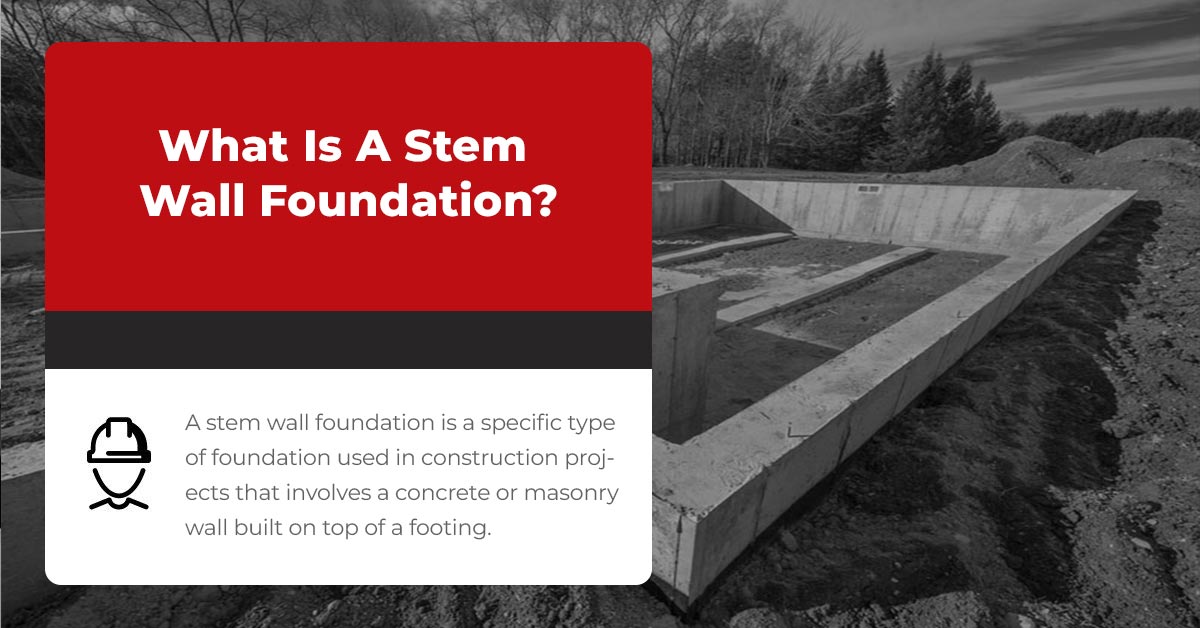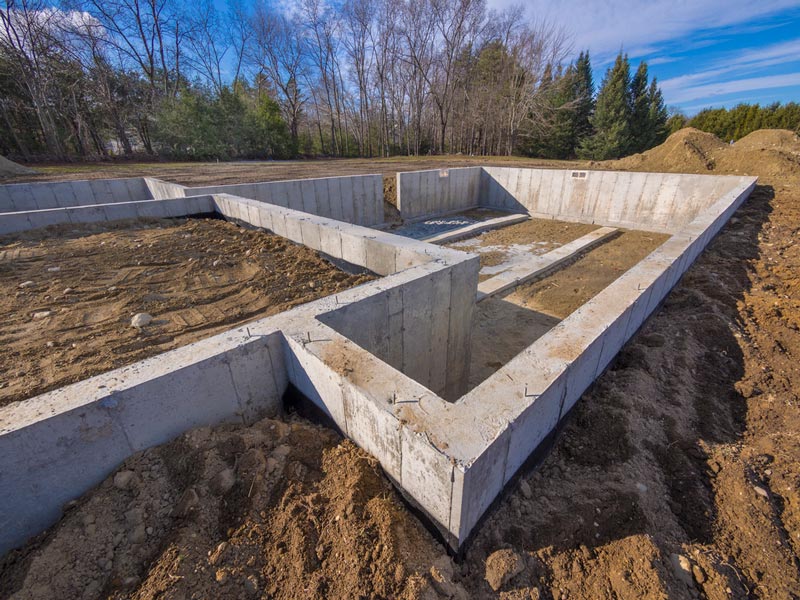Looking for information about stem wall foundations? If so, don’t hit that back button because you’ve landed on the right page. In this article, we’ll discuss the concept of a stem wall foundation, its benefits, materials used, how to care for a stem wall foundation and more. By arming yourself with knowledge about stem wall foundations, you’ll be able to make informed decisions not only when building but also throughout the lifespan of your house. So keep reading as we dive into all things related to stem wall foundations.
What Exactly Is A Stem Wall Foundation?
A stem wall foundation is a specific type of foundation used in construction projects that involves a concrete or masonry wall built on top of a footing. This wall is typically around one to two feet tall and is used to support the weight of the building.
One of the main benefits of a stem wall foundation is that it can help distribute the weight of a structure more evenly, reducing the risk of settling or cracking. Additionally, this type of foundation can be beneficial in areas with high wind or seismic activity, as the added strength and stability the stem wall provides can help prevent damage from these forces.
Stem wall foundations are typically used in residential construction projects but may also be used for commercial or industrial buildings. They can be constructed from various materials, including concrete blocks, poured concrete, stone, or brick. The specific materials used will depend on factors such as the size and weight of the structure being supported, as well as the particular requirements of the local building code.
The Different Types Of Stem Wall Foundations
Different types of stem wall foundations have distinct characteristics and are designed for specific purposes. There are also variations in the construction materials used. For example, stem walls can be made of concrete, masonry, stone, or wood. The type of material used will depend on factors such as the size of the structure, the climate, and the soil conditions.
Benefits Of Using A Stem Wall Foundation
One of the main benefits of using a stem wall foundation is its ability to provide a stable and secure base for a building. A stem wall foundation creates a seal between the foundation and the ground, preventing moisture and water from seeping into the building’s interior and causing water damage or mold growth.
Another advantage of using a stem wall foundation is its ability to accommodate challenging terrain. Unlike other types of foundations, such as slab or basement, a stem wall foundation can be built on sloped or uneven ground without extensive excavation or grading. This makes it ideal for building on hillsides or in areas with significant topography variations.
Stem wall foundations have also proven to be highly resilient and robust structures that can withstand the test of time. When properly constructed and maintained, they can remain in good condition for decades, if not centuries. Additionally, they require minimal upkeep and repairs compared to other types of foundations.
Lastly, a stem wall foundation can add significant value to a property. It offers a more robust and secure foundation for the structure and provides additional space for air circulation and insulation, ensuring a comfortable and energy-efficient living environment. In turn, this can increase the property’s resale value and make it a good investment for potential buyers.
Materials Used For Constructing Stem Wall Foundations
The primary materials used to build stem wall foundations are concrete, rebar, and masonry units.
Concrete is the most prevalent material used in stem wall foundations due to its durability and strength. It is typically poured into a mold or formwork and allowed to cure over time. This results in a solid, stable foundation that can withstand significant weight and pressure.
Rebar, or reinforcing steel, is often added to the concrete to increase its tensile strength and resistance to cracking. By adding steel reinforcement, the foundation becomes even stronger and capable of supporting heavier loads. Masonry units, such as concrete blocks or bricks, may also be used to build the stem wall. These units are typically laid in a pattern and secured with mortar to create a strong, stable wall.
In addition to these primary materials, other elements may be incorporated into constructing a stem wall foundation, such as waterproofing and drainage systems. These elements ensure that the foundation remains dry and free of water damage, which can compromise the structural integrity of the building. Overall, the combination of concrete, rebar, and masonry units provides a strong, stable foundation that can support the weight of any building. When constructed correctly and with the appropriate materials, stem wall foundations can last for decades, providing a solid base for any structure above.
Tips For Maintaining Your Stem Wall Foundation
Properly maintaining a stem wall foundation is vital to ensure the stability and longevity of any building:
Firstly, regular foundation inspections are necessary to identify any damage. This means that cracks, leaks, and bulges should be detected and repaired promptly to avoid further harm to the foundation.
Secondly, proper drainage and moisture management are essential to prevent water accumulation and moisture buildup. Any pooling water around the foundation should be diverted, and gutters and downspouts should be regularly cleaned to facilitate efficient water flow. Moreover, a proper drainage system should be installed around the foundation’s perimeter to ensure excess moisture removal.
Thirdly, the foundation’s surface should be kept clean and free from any debris that can accumulate over time. This ensures that the foundation remains in good condition and prevents pests and critters from making a home in the foundation.
Lastly, it is essential to maintain the soil around the foundation by regularly watering it during dry seasons to prevent soil shrinkage and settling. This will help maintain the foundation’s stability and keep it level.
If you think your home might have a foundation problem, contact Foundation Professionals of Florida today to schedule a free foundation evaluation. If we find a problem, we’ll give you a repair estimate.



